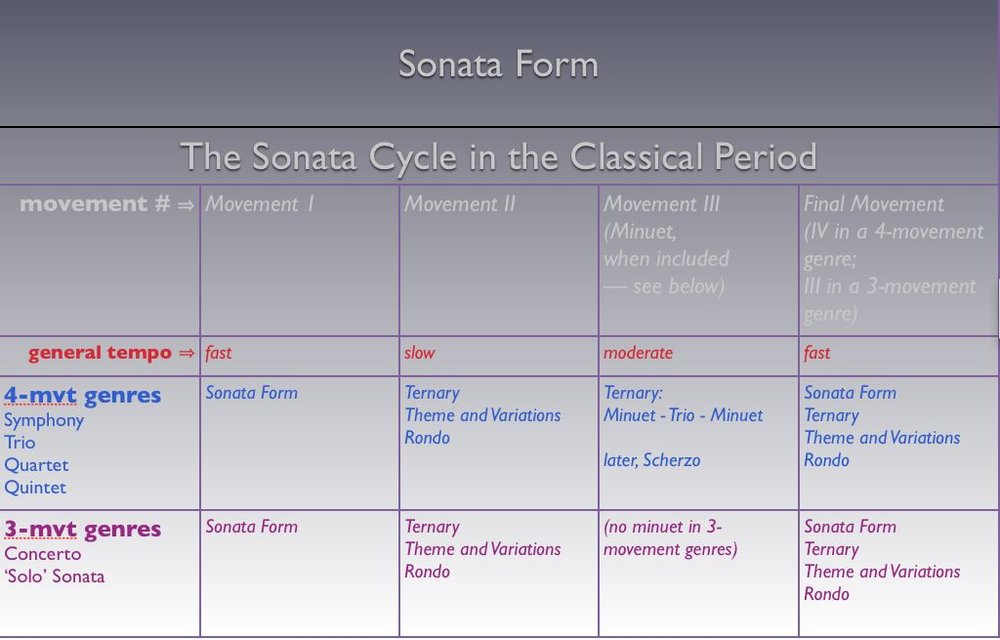Lecture 14
unity and form in the classical era
The principle function of form is to advance our understanding.It is the organization of a piece that helps the listener to keep the idea in mind,to follow its development, its growth, its elaboration, its fate.—Arnold Schoenberg
Unity and form in the classical period
Classical period C.E. c.1750-1810
More than any period in music history, the classical period explored and exploited forms (structures) of all kinds and invented a new, complex form called sonata form. we will begin our exploration with a discussion about the functions of form, more on to the simplest forms and continue in the next lecture to the more complex, finishing with sonata form.
Topics covered:
- unity and form in poetry and art
- unity and form in music
- forms of the classical period
- the sonata cycle
- theme and variations form
- binary form
- ternary form
Composers
- Mozart
- Beethoven
Objectives:
- understand larger formal musical designs
- the sonata cycle
- distinguish one form from another by careful listening
- binary form
- theme and variations
- ternary form
Assignments:
- watch lecture 14 (in multiple parts for quicker download)
- review previous chapters, as necessary
- read textbook, Chapter 17-18
- As you are reading your textbook, go through the Listening Exercises in textbook sequence, listening to the examples provided.
- regarding developing listening skills: you should be in the habit of developing your listening skills early in the game - the assignments will get more complex through the semester and you may find yourself unable to keep up. As simple as these early assignments may seem to some of you, they will help to keep you on the right track, and help you develop the skills required for a greater appreciation in listening to music, including the music that you listen to for your own enjoyment. Of course, those objectives are in total sync with the success you hope to have in this class. Remember that your ability to recognize the music on your CDs will be tested and will, of course, impact your grade.
Audio / Video lecture
- click lecture segments below in sequence
- presented in several segments to reduce download time
- total lecture time: approx. one hour 15 minutes (all segments included)
- can be downloaded for portable media players by right clicking each segment link and choosing save option. (note: older Macs and Mac notebooks with single-button mice: control-click)
Video Timeline for the Classical (very short)
- some important dates and events, accompanied by music generally applicable to the period
- To give you a better perspective on the period and its composers,
- I might suggest that you watch this at least twice—
- once before the first lecture covering the period
- once more after the last lecture covering the period.
Lecture 14.1
Unity and variety in poetry and painting


Lecture 14.2
Unity and Variety in The Music Man

Lecture 14.3
Forms in the Classical period
Lecture 14.4
Forms in the Classical period, part 2